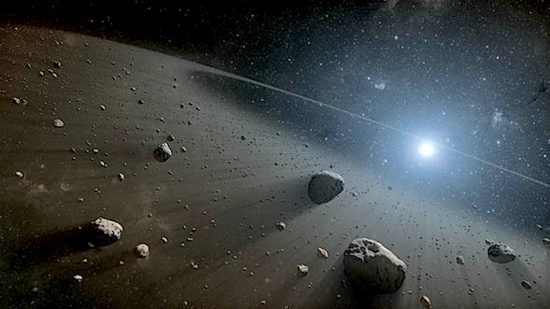
February 4, 2020
The Universe is composed of condensed plasma.
We have first raised a dust and then complain we cannot see.
— George Berkeley
In 1755 Immanuel Kant suggested that the Solar System evolved from a cloud of dust and gas floating in space. The cloud condensed because gravitational attraction between particles caused them to clump together. Each clump became the center of even greater attractive force, drawing them all together into a larger mass. Its gravity increased to the point where gases and dust condensed into a small, hot ball. As compression increased the heat, it began to rotate due to the angular momentum contained in the original cloud. More and more material accumulated into a mounting gravitational field, until it ignited in a nuclear fusion reaction. This is the mainstream understanding of star birth.
One problem is that it fails to explain how the planets possess about 97% of the total angular momentum in the Solar System when their combined masses are less than one-tenth of one per cent of the Sun’s mass. Some astronomers attempt to prop-up the theory by suggesting that the Sun has an undetected companion star on a long, parabolic orbit. This companion star supposedly makes up the missing inertia.
In the early 1900s, the binary companion “tidal hypothesis” was suggested as an alternative to the collapse theory, although it requires a catastrophic encounter with an unknown star from outside the Solar System. The hypothesis states that the Sun passed close enough to another star in the past that some stellar material from both was pulled out. The solar plasma cooled while it entered orbit around the Sun and slowly formed the planets. In that way, the problem of angular momentum is solved by the action of another star. It also explains the large quantities of dust found in most exoplanetary systems.
Free-floating nebular dust is just 0.1 microns in size, or smaller than the wavelength of blue light at 0.45 microns. According to the “cosmic dust cycle”, some stars blow off incredible quantities of dust when they explode.
The Picture of the Day makes a point that stars are not gravitationally compressed cold gas and dust. Rather, they are composed of plasmas, the “fourth state” of matter. Plasma is ionized: one or more electrons are stripped from the atoms in its substance, making it electrically charged. Plasma does not behave like pressurized gas, it behaves according to the tenets of plasma physics.
In an electrically charged plasma star, explosions occur because of double layer breakdowns. A star’s power comes from external currents of electric charge flowing through vast circuits in space. Instead of “core rebound” or “white dwarf accretion”, supernovae are the result of a stellar “circuit breaker”, where the stored electromagnetic energy in the circuit is suddenly focused at one point.
When a star’s double layer explodes, the electromagnetic energy stored in its galactic circuit surges into the explosion. The resulting supernova radiation is emitted across the entire electromagnetic spectrum from radio to gamma rays. So, it is electricity that causes the stars to shine, and it is electricity that causes them to explode. Dust is formed in supernovae because z-pinch effects in double layer explosions cause various plasmas to condense in the electromagnetic waists of the pinches, forming ultra-fine dust particles.
Stephen Smith
The Thunderbolts Picture of the Day is generously supported by the Mainwaring Archive Foundation.












